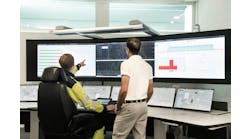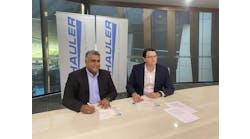Its becoming increasingly apparent that the agreement reached in April 2007 between the FDT Group and the EDDL Cooperation Team (ECT) to work together to finalize a solution and achieve a common framework that meets the requirements of all parties was not so much a peace treaty as a temporary cease fire.
The latest move in the on-going confrontation is the FDT Groups decision to take the campaign to the opposition by attempting to raise the profile of FDT/DTM (Field Device Tool/Device Type Manger) technology in North America through a series of seminars in major cities in the U.S. and Canada. It has also enlisted ARCs help by showcasing the technology at its forum last month in Tokyo and at its forthcoming events in Houston in October 2008 and Orlando in February 2009 and by briefing ARC staff on the current state of play.
That last initiative seems to have landed ARCs Wil Chin in a certain amount of hot water. No sooner had his report appeared in the weekly ARCwire newsletter (www.arcweb.com) than a detailed critique by Emersons Jonas Berge appeared on Joe Cahills Emerson Process Experts blog (www.emersonprocessxperts.com). What is perhaps surprising about this latest skirmish is that it seems to have been relatively easy for Berge to refute most of the points at issue. For example the claim, in Chins report, that FDT allows users to access device data and settings through any protocol or operating system was always going to produce an explosive response from the EDDL camp, since this is one of, if not the most fundamental differences between the two technologies. FDT/DTM is based on Microsoft technology and only works for Windows. Operating system independence is a unique characteristic of EDDL... thunders Berge.
The P word
At another point, Chin allows the dreaded word proprietary to creep into his report (Supporters of ISA100 vis-à-vis WirelessHART please note.) EDDLs require an application that typically is proprietary, developed by vendors for their products that can be applied to multi-vendors with appropriate testing, he writes. Again Berge is quick to counterpunch. Device management software using EDDL are not proprietary. EDDL is an international standard IEC 61804 established since many years ago . . . Millions of devices from hundreds of manufacturers support EDDL, including all HART and Foundation fieldbus plus many Profibus devices.
Later on Chin refers to the November 2007 report from the WIB International Instrument Users Association into the evaluation conducted by Shell Global Solutions (SGS) which, he says, concluded that DCSs should support both FDT and EDDL. Not in Berges view: Although it may be true that combining EDDL with FDT/DTM you get some benefits from both, unfortunately you also get the drawbacks of both. Since FDT/DTM adds little or nothing to enhanced EDDL . . . there is no additional benefit to speak of. However, the drawbacks of mixing both technologies are plenty.
We have some sympathy with Chin weve been there ourselves. Reporting on the benefits of EDDL, as described by Emersons Martin Zielinski, back in brought accusations of bias, gullibility and susceptibility to spin, all of which were repeated in reverse when we reported the comments from the other side. What does surprise us, however, is that a full 16 months after the two sides agreed to bury the hatchet, they continue to make questionable or, in some cases, downright untrue observations about each other. What effect this has on potential users is difficult to assess but its hard to believe it increases their confidence in either technology.
Right into the middle of this new rumpus comes the Fieldbus Foundation with a series of updates to its Device Description (DD) tools and specifications including enhanced versions of DD Services, DD Integrated Development Environment, Device Description Language Interoperability Specification, Device Description Language Specification and DD Library.
The updated DD solutions are intended to help device developers, system suppliers and end users advance the performance of their Foundation fieldbus products, explained Fieldbus Foundation manager for fieldbus products Stephen Mitschke.
Because the enhancements support Unicode, device and system suppliers gain an expanded ability to write and visualize DDs in local languages, including Asian languages. They can also build device-level menus, providing visualization of multiple blocks and enhancing device integration. In addition, support for new parameter attributes will ensure an enhanced user interface for accessing devices. Support for device-level menus will become mandatory as part of the Foundations host profile test and registration program. Hosts successfully completing registration testing will be authorized to bear the Foundations official product registration symbol.
The Foundation has also now released the final Foundation Device Coupler Test Specification, which allows coupler manufacturers to perform a standard set of tests against their implementation. It includes criteria from IEC 61158-2:2003 and additional functional tests such as input impedance, short-circuit reaction time, and bus voltage consumption.



